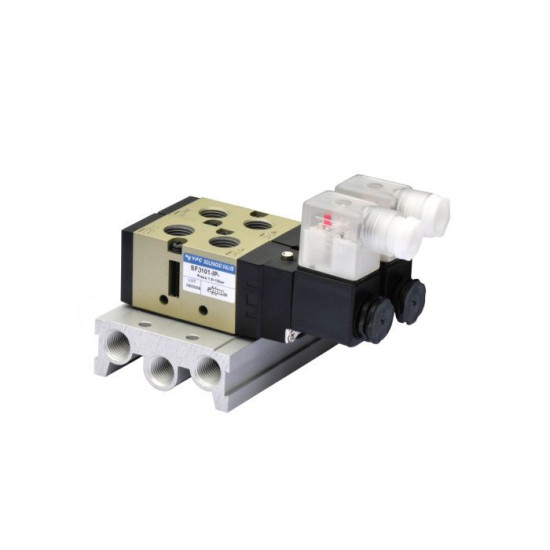Pneumatic Valve Terminals: Features & Industrial Applications
Pneumatic Valve Terminals
Pneumatic valve terminals are essential components in industrial automation systems that require precise fluid control. These devices serve as interfaces between electrical control systems and pneumatic components, enabling efficient management of multiple valves in a compact space.
At Pneumatig, we offer high-quality solenoid valves specifically designed for demanding industrial applications. Our terminals for the YPC SF series stand out for their compact design and versatility, allowing the integration of between 2 and 14 valves in a single block, thus optimizing space in installations where every inch counts.
Technical Features of Valve Terminals
The pneumatic valve terminals we offer present the following distinctive characteristics:
- Modular design that allows customized configurations according to specific needs
- Compatibility with control voltages from 12V DC to 230V AC
- High flow with minimal energy consumption
- Capacity to house up to 14 valve positions (28 coils)
- Possibility of manual actuation via push button or switch
- Advanced connection technology for fast and reliable data transmission
Materials and Construction
The construction quality of our terminals guarantees durability and performance in industrial environments:
- Valve body: high-strength aluminum
- Coil structure: aluminum
- Seals: NBR rubber for excellent sealing
- Springs: corrosion-resistant stainless steel
- Cover: technical plastic (PA, PC)
- Mounting system: SCP1
Key Takeaways: Pneumatic Valve Terminals
- Integrate up to 14 valves in a compact space.
- Offer manual and electrical actuation for greater versatility.
- Constructed with durable materials for industrial environments.
Main Applications
Pneumatic valve terminals find application in various industrial sectors where precise control of pneumatic actuators is required:
- Automated production lines
- Packaging and wrapping machines
- Material handling systems
- Processing equipment in the food industry
- Textile machinery
- Control systems in the automotive industry
The modular structure of our terminals allows adaptation to different configurations, facilitating system expansion according to operational needs. Additionally, the modular kits technology implemented ensures simple installation and reduced maintenance.
Advantages of Pneumatic Valve Terminals
Opting for valve terminals instead of individual valves offers multiple benefits:
- Significant reduction in space required for installation
- Decrease in wiring and pneumatic connections
- Easier maintenance by centralizing components
- Faster and synchronized response of actuators
- Possibility of integration with advanced industrial control systems
- Lower overall energy consumption of the system
For applications requiring greater capacity, we recommend exploring our SF valve islands, which offer even more integrated solutions for complex systems.


Login and Registration Form